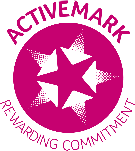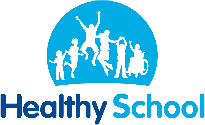At Brookfield our school curriculum follows national requirements in preparation for SATs at the end of Key Stage 2 (Yr6).
Why we test:-
To find out how well the children have learnt and retained information in the core subjects of English and Maths and to check on their progress throughout the year. The government issues expectations of attainment and progress and we need to monitor that our children are on track with their learning.
How we assess:-
We use continual assessment by looking at children’s understanding in the lesson, their self-assessment judgements, our marking of their work etc throughout the terms. We moderate our judgements together with other schools to ensure conformity and consistency.
How we test:-
We use practice papers for children in Yr6 throughout the year to get them used to the style of questioning and to highlight any gaps in their knowledge so that we can address these.
We use Test-base papers for children in Yrs 3, 4 and 5.
Children may need additional support during testing to ensure we get a true reflection of their abilities e.g. a child with motor coordination issues might need a scribe for their writing. We also discuss ‘strategies for taking tests’ as part of the children’s learning to prepare them for the future.
Analysis of the data tells us where each child has gaps in their knowledge and understanding and these can be addressed in the following sessions of Maths and English.
When we test:-
Yr6 testing = 3 times per year, plus SATs tests in May.
Yr3, 4 and 5 use Test-base papers in Term 5 to review progress and support teacher assessments.
Teacher Assessments are throughout the year using an on-line assessment tool for day-to-day assessments.
Test-base questions are often used as part of a lesson to improve a child’s confidence in applying their learning.
Tracking progress:-
We track progress closely, using formal and informal assessment to ensure appropriate progress is made.
We aim for children who are not working at the expected standard to make accelerated progress in order to close the gap towards the age-appropriate required standard.
Reporting to parents:-
In Terms 2 and 4, we meet with parents to discuss the children’s progress and share their targets for improvement with some suggestions for helpful home support.
In Term 6, we write an end of year report.
For Yr6 we report end of year Teacher assessments for attainment in Maths, Reading, Writing, Grammar Punctuation and Spelling, and Science.
The following terminology is used:-
PKE = performing at key stage below (i.e. KS1)
WTS = working towards expected standard
HNM = has not met the expected standard
EXS = achieved expected KS2 standard
GDS = working at greater depth standard
For Yr6 end of year SATs test data we report:-
The Department of Education has released the following information:-
The 2016 KS2 assessments are the first which assess the new, more challenging national curriculum which was introduced in 2014. New tests and interim frameworks for teacher assessment have been introduced to reflect the revised curriculum. Results are no longer reported as levels, and each pupil will now receive their results as a scaled score and teacher assessments based on the interim framework.
Because of the changes, figures for 2016 are not comparable with those for earlier years. The expectations for pupils at the end of KS2 have been raised. Given the differences in the curriculum and assessments, levels are not comparable with scaled scores or teacher assessment outcomes.
The scaled score runs from 80-120 with 100 as the expected standard. This means that:-
A score between 80-99 = child has not met the expected standard for Yr6
A score of 100+ = child has met the expected standard for Yr6.
For all other year groups we report children’s end of year attainment in this way:-
At Brookfield we follow the new national curriculum with revised year group expectations in English, Maths and Science.
Class activities and tasks within the lessons are differentiated according to the children’s needs.
Remembering that the revised year group expectations are of a much higher standard than previously taught; here is a general guide:- |







